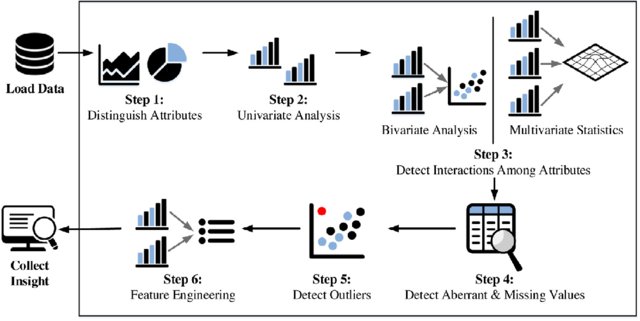EDA
Components of EDA
To me, there are main components of exploring data: Understanding your variables. Cleaning your dataset. Analyzing relationships between variables.
Data visualisation
Missing value analysis
Outlier detection analysis
Module 06
Exploratory Data Analysis
Exploratory data analysis is a data exploration technique to understand the various aspects of the data. It is a kind of summary of data. It is one of the most important steps before performing any machine learning or deep learning tasks.
Data Scientists carry out exploratory data analysis procedures to explore, dissect, and sum up the fundamental qualities of datasets, regularly using information representation approaches. EDA procedures take into consideration compelling control of information sources, empowering Data Scientists to discover the appropriate responses they need by finding information designs, spotting inconsistencies, checking suppositions, or testing speculation.
Data Scientists utilize exploratory data analysis to observe what datasets can uncover further past conventional demonstrating of information or speculation testing assignments. This empowers them to acquire top to bottom information on the factors in datasets and their connections. Exploratory data analysis can help recognize clear mistakes, distinguish exceptions in datasets, get connections, uncover significant elements, discover designs inside information, and give new bits of knowledge.

Steps In Exploratory Data Analysis
Need to Automate Exploratory Data Analysis
Expanded client movement on the web, refined instruments to screen web traffic, the multiplication of cell phones, web empowered gadgets, and IoT sensors are the essential elements speeding up the pace of the information age in this day and age. In this computerized age, associations of all sizes understand that information can assume a crucial part in improving their proficiency, profitability, and dynamic abilities, prompting expanded deals, income, and benefits.
Nowadays, most organizations approach immense datasets, yet only having huge measures of information doesn’t enhance the business except if ventures investigate the data accessible and drive authoritative development.

Become a Full-Stack Data Scientist
Power Ahead in your AI ML Career | No Pre-requisites RequiredDownload Brochure
In the lifecycle of a data science project or any machine learning project, more than 60% of your time goes into stuff like data analysis, feature selection, feature engineering, etc. Because it is the most important part or backbone of a data science project is that particular part itself where you have to a lot of activities like cleaning the data, handling missing values, handle outliers, handle imbalanced datasets, how to handle categorical features, and many more. So if you want to save your time in exploratory data analysis then we can use python libraries like dtale, pandas profiling, sweetviz, and autoviz to automate our tasks.
Libraries Automate Exploratory Data Analysis
In this blog, we are discussing four important python libraries. These are listed below:
- dtale
- pandas profiling
- sweetviz
- autoviz
D-tale
It is a library that has been launched in February 2020 that allows us to visualize pandas data frame easily. It has many features which are very handy for exploratory data analysis. It is made using flask backend and reacts frontend. It supports interactive plots, 3d plots, heat maps, the correlation between features, builds custom columns, and many more. It is the most famous and everyone’s favorite.

